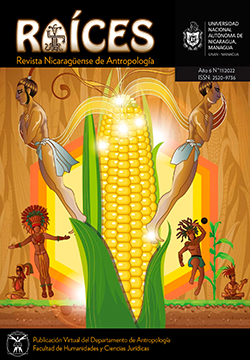Architectural spaces for pedagogical mediation: Designing together the new school
DOI:
https://doi.org/10.5377/raices.v6i11.14468Keywords:
Educational space, Architecture, Integration, Pedagogical Mediation, University teaching processAbstract
Pedagogy and architecture have educational purposes, because in essence, they accompany individuals in the perception and action of the world, determining to a great extent their physical, emotional and social intelligence. It reviews the teaching theories, the contextual reasons and the historical conditions that have configured these intentional spaces since the origin of the dissemination of knowledge, and reviews in more detail those theoretical spaces granted intentionally or unconsciously in a theoretical or practical way, the quality of those suggestions, whether they are theoretical or real architectural models, must highlight some qualities.It focuses on the space-school dedicated to the stage of formation of individuals on a regular basis and focuses on the experience of space, and based on its most illuminating components, the individual classifi cation of the didactic space was carried out. This essay was based on the application of the information approach, personal experience, life stories, observations, historical texts that are developed later. It is necessary to reconsider the educational space to adapt it to the current needs of the knowledge society, to reflect on architectural pedagogy from the perspective of integration between disciplines: architecture and pedagogy. Horizontality is far from establishing greater specialization and isolation, but it is essential. Society develops through mystification, by establishing common arguments, generating territories for encounter.
Downloads
415
References
Hunsen y Postlehwaite (1989) Enciclopedia internacional de la educación. reire, P. (2005). Pedagogía del Oprimido. Buenos Aires. Siglo XXI.
Hunsen, T. & Postlethwaite, N. (1989). Enciclopedia internacional de la educación. México: Ministerio de Educación y Ciencia.
Kahn, L. (1998). Conversaciones con estudiante. Barcelona: Editorial Gustavo Gil. Lahoz
Abab, P. 1992. Monográfi co. El higienismo en la confi guración del espacio escuela. Revista de educación, núm. 298 . Pgs.89-118.
Lahoz Abab, P. 1991. El modelo froebeliano de espacio escuela. Su introducción en España. Universidad Española de educación a distancia. La educación en la España del siglo XX. Pgs.107- 133.
Pozo Bernal M. Arquitectura y Pedagogía. La disolución del aula. Mapa de espacios arquitectónicos para un territorio pedagógico Barcelona 2014 Rosseau. Emilio, o de la educación. México: Porrua, 1999.
Ugarte, D. (2007). El poder de las redes. Manual ilustrado para personas, colectivos y empresas abocados al ciberactivismo. Madrid.
Downloads
Published
How to Cite
Issue
Section
License
Copyright (c) 2022 © Universidad Nacional Autónoma de Nicaragua, Managua, UNAN-Managua

This work is licensed under a Creative Commons Attribution-NonCommercial-ShareAlike 4.0 International License.
This license enables reusers to distribute, remix, adapt, and build upon the material in any medium or format for noncommercial purposes only, and only so long as attribution is given to the creator. If you remix, adapt, or build upon the material, you must license the modified material under identical terms.




